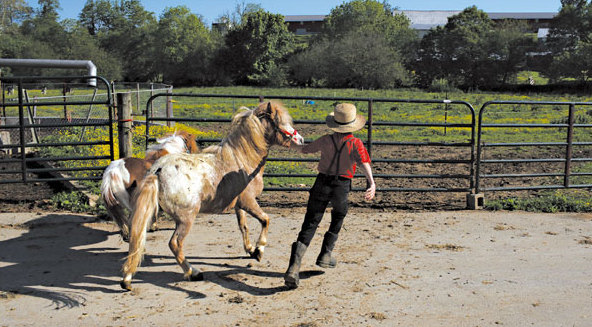Germ-free bubbles may breed allergen troubles
These days most American schools ban the old standby lunch, the peanut butter and jelly sandwich, because of the severe and occasionally deadly reactions some students have to nuts.
The "allergy epidemic" of recent decades has left two to three times as many people with allergic disease and asthma. About one in 13 children has a food allergy, and the number with a peanut allergy tripled from 1997 to 2007, an epidemic for which there is no clear explanation, The Times reported.
Scientists believe that exposing children to germs at an early age is good for them. One Swedish study recommends that parents lick their babies' pacifiers clean, The Times reported. These babies, researchers said, developed fewer allergies than those whose parents rinsed or boiled the pacifiers, and had smaller amounts of a type of white blood cell that develops in response to allergies.
|
Children who live on Amish farms are far less sensitized to allergens than the average American child, a study found. An Amish farm in Pennsylvania. Todd Heisler / The New York Times |
Dr. Joel Berg, president of the American Academy of Pediatric Dentistry, said the findings reinforce what he has told his patients for years: "Saliva is your friend." It contains enzymes, proteins, electrolytes and other beneficial substances, some of which can perhaps be passed from parent to child.
Another way to lower the risk of allergies would be to raise a child in a barn. Or a cowshed. Without electricity, indoor plumbing or running water.
This is the way the Amish, who eschew many of the conveniences of modern life, live and raise their families in Pennsylvania, Ohio and Indiana.
Mark Holbreich, an allergist in Indiana, discovered that just 7.2 percent of the 138 Amish children he tested were sensitized to tree pollens and other allergens, as opposed to about half of all American children.
Andrew Mast, an Amish farmer, told Dr. Holbreich that his childhood was filled with farm work. "My first memory is of milking," he said, at about age 5. His wife, Laura, worked in the barn when she was pregnant, and their two toddler girls were brought there as early as 3 months old.

"People learn to walk in here," Mr. Mast said.
Ninety-two percent of the Amish children Dr. Holbreich tested lived on farms or visited one frequently, and he believes that is the Amish secret, The Times reported. Since the late 1990s, European scientists have investigated what they call the "farm effect." The theory is that microbes from the cowshed, plant material and raw milk stimulate the immune systems of children and protect them from allergies.
But since most of us spend about 90 percent of our time inside drywall caves, ecologists like Dr. Noah Fierer, a microbiologist at the University of Colorado Boulder, have begun to investigate those spaces, The Times reported. Scientists want to know how we "colonize" our homes with viruses, bacteria, microbes.
Dogs or other pets affect the tiny life-forms living on our pillows and television screens. Eventually, scientists "hope to come up with strategies to scientifically manage homes, by eliminating harmful taxa and fostering species beneficial to our health," Peter Andrey Smith wrote in The Times.
One 2012 study in Finland found that plant diversity outside was linked to a greater variety of bacteria on human skin inside homes; teenagers exposed to this increased biodiversity were at lower risk for allergies.
"Right now, we don't understand how buildings work" as ecosystems, said Jordan Peccia, an environmental engineer at Yale University who studies the link between increased fungal diversity indoors and lower rates of asthma. "We've seen it as an improvement to make homes more insulated, but maybe that's a mistake from the standpoint of ecological diversity."























